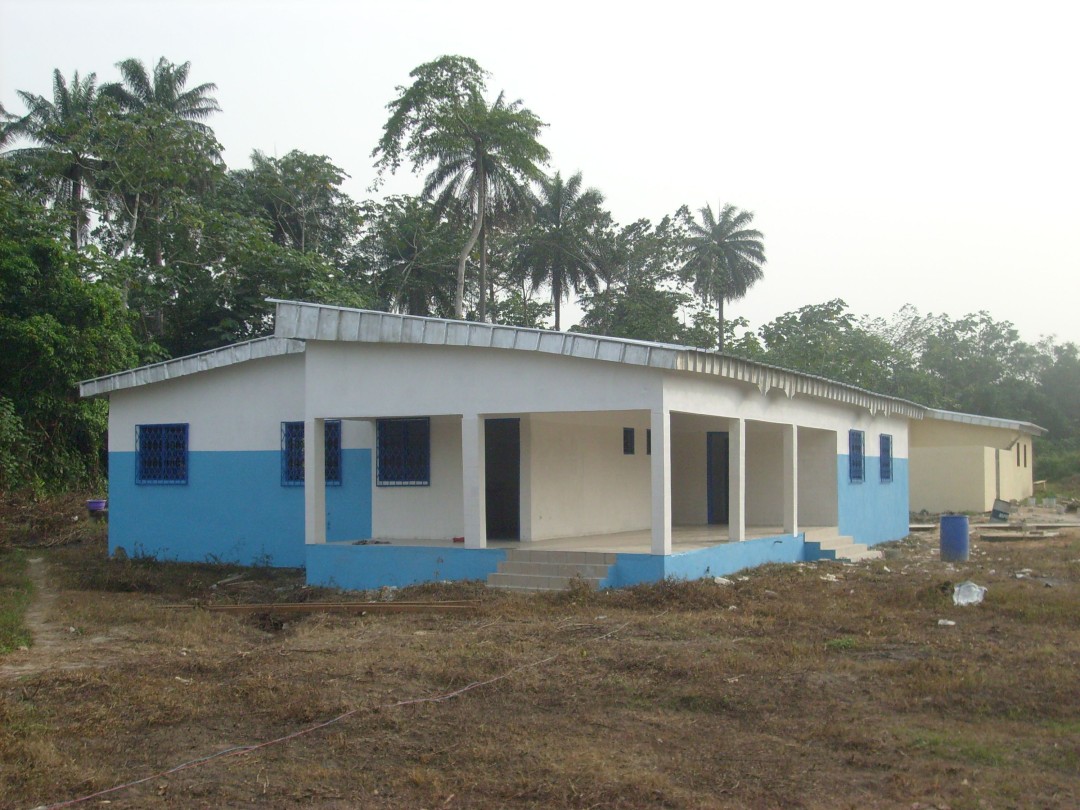Construction of a maternity
The project aimed to undertake the necessary construction works needed to finalise the maternity building begun by EFFATA, in Odoguié, Cote d’Ivoire. The maternity hospital was to be built to reduce the incidence of infant mortality and to improve maternal health before, during and after birth, of the women in the Odoguié village and from the five neighbouring villages. The project included the construction of a home for the midwife.
The maternity hospital, together with the midwife’s home, was inaugurated in February 2012 in the presence of the administrative, health and religious authorities. The political crisis in 2010/2011 delayed completion of the project, initially planned for 2011. Since completion, 198 births, 993 pre-natal and 70 post-natal consultations took place, in the presence of the midwife, certified and paid by the state. The midwife introduced a number of innovations, including paediatric consultations focused on child vaccination and family planning consultations. No deaths were recorded from its opening. The project was extended and followed until the installation of the water supply was confirmed.
Founded in 2007, the Swiss association EFFATA “Ouvre toi!” works to improve the living conditions of children, families and local communities in developing countries, by providing them with health care, access to water, education and training.
Type
HealthDuration
August 2010 - December 2014Location
Odoguié / Cote d'IvoireWith whom
EFFATA

Cote d'Ivoire
Population
24.3 million (2017)
Per Capita Income
USD 1'580/year ( 2017)
Poverty rate *
46% (2015)
Literacy rate
44% (2016)
Human Development Index
170th out of 189 countries (2018)
Côte d'Ivoire is one of the largest economies in the West African Economic and Monetary Union (WAEMU), accounting for close to 40% of the Union’s economic activity. Its development was affected by years of conflict, which led to an increase in the poverty rate from 40% in 2002 to 46% in 2015. However its impressive economic performance, with a
GDP growth rate of 8% in 2016, has resulted in a decrease in poverty. Insufficient investment in basic social services remains a challenge to child survival, in particular for children under-five (55 deaths per 1,000 live births in 2016). Public health expenditure rose from 1.7% 2011) to 5.4% of GDP (2015).
Sources: World Food Program, UNICEF, World Bank, 2016 Human Development Report, Human Development Indices and Indicators (2018 Statistical Update)
*The percentage of the population living below the national poverty line.